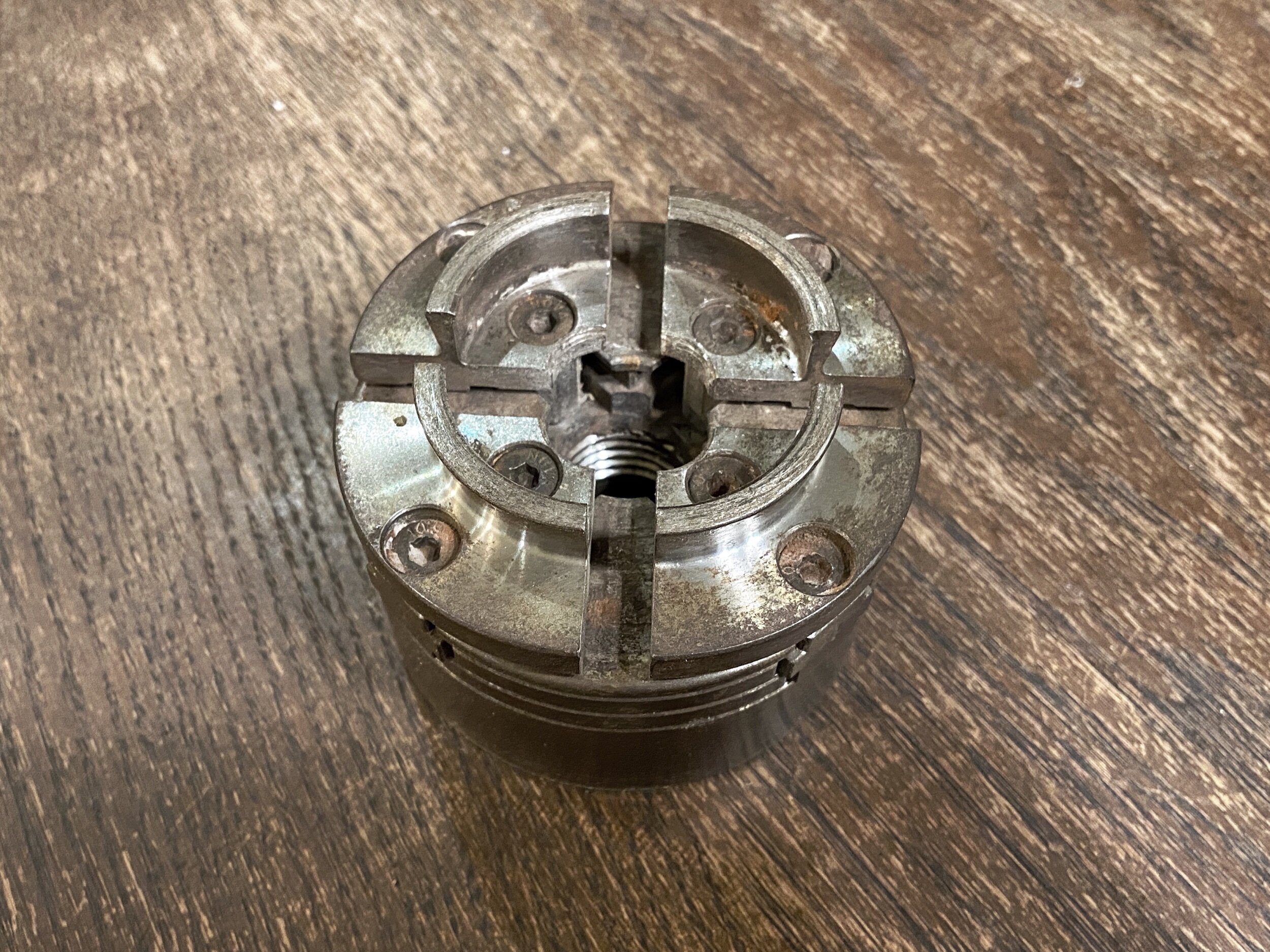Tools For Duck Calls (Part 1 of 3)
“What does it take to make a duck call?” This is one of the most asked questions I get when I get into a conversation about making duck calls. I usually answer with a light laugh and “Years of patience and hard work”. Most of the time the conversation stops there but every now and then the conversation goes a little further.
In this three part series, we’ll go over the extended part of that conversation described above.
Part 1: Tools For Turning Calls
Part 2: Tools For Drilling On The Lathe
Part 3: Tools For Cutting and Cutting Inserts
Hopefully for those looking to get into call making, this series will help you jump in head first!
Part 1: Tools For Turning
Wood Lathe
Self Centering 3 or 4 Jaw Chuck
Collet Chuck
Live Center
5/8” Expanding Mandrel
Chisels - HSS Carbide
Calipers
Wood Lathe
The sky is the limit when it comes to wood lathes. The main thing is buy a lathe that meets your budget constraints. Lathes with a MT2 Morse taper offer the most flexibility when it comes to accessories. A few reputable brands are JET, Rikon, Nova, Grizzly, and Laguna. I chose the NOVA Comet II midi lathe. This lathe met my budget and has met my expectations for 6+ years.
Self Centering 3 or 4 Jaw Chuck
A good chuck will save time and frustration when holding a blank for turning or drilling. You will use the jaw chuck to hold the barrel blank for drilling if you choose to drill the blank on the lathe. You can also use the chuck to hold your insert blank while making the tone board tennon.
Collet Chuck
I made calls for years using my jaw chuck to hold inserts in place for turning the exhaust and drilling the bore. Once I purchased a collet chuck, the quality of my inserts increased dramatically. A collet chuck will hold the insert or expanding mandrel with no runout. Collet chucks are also much safer, in my opinion, when turning close to the chuck. (Spinning jaws can lead to bloody knuckles)
Live Center
A live center is really nothing more than a metal shaft with a point. The live center fits into the tail stock of the lathe and keeps your parts steady and centered.
5 /8” Expanding Mandrel
Expanding mandrels are used to hold a drilled barrel blank in place while it is being turned on the later. They are typically knurled for wood and smooth for acrylic or other transparent materials.
Chisels
There are two types of chisels for wood turning: High Speed Tool Steel (HSS) and Carbide. HSS chisels have traditionally been used for wood turning for years. They require additional sharpening tools to maintain a sharp edge and proper technique plays a major role in the finish the tool provides. HSS tools can provide a great finish that requires very little sanding. Carbide chisels are more forgiving and require less technique when turning. They also do not require additional tools for sharpening. Once a carbide tool is dull, you simply swap the tip out and start turning again.
Calipers
Calipers will be used to checking dimensions. Once you get past the excitement of turning on your lathe and focus on dialing in the sound of your duck call, you will realize that thousandths of an inch matter. A good set of calipers will last a lifetime.
Conclusion
Everyone has a different method when it comes to making calls. This is not a comprehensive list of everything I use but this list will get you started down the right path. In Part Two, we will cover the tools needed for drilling on the lathe.







